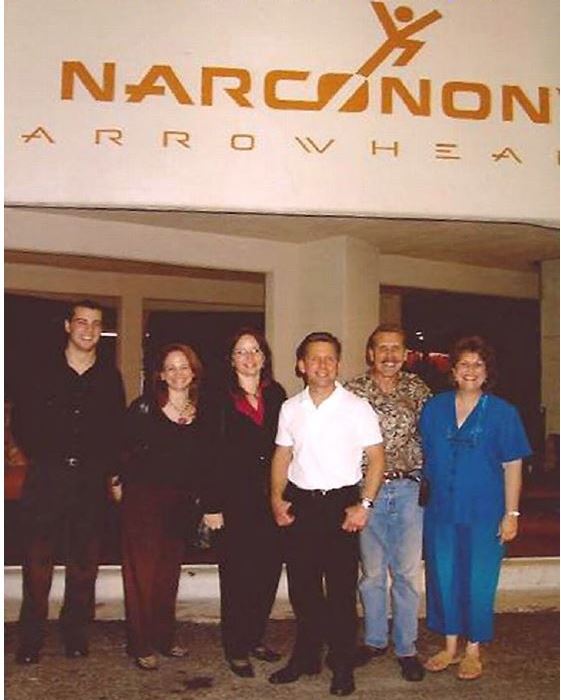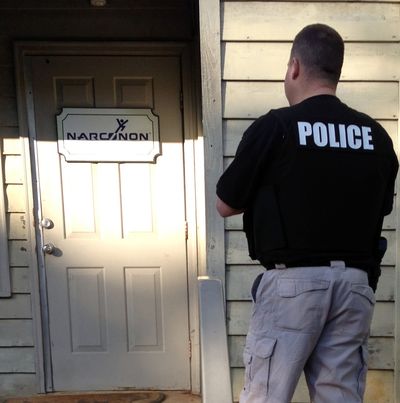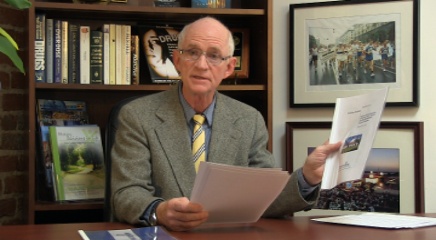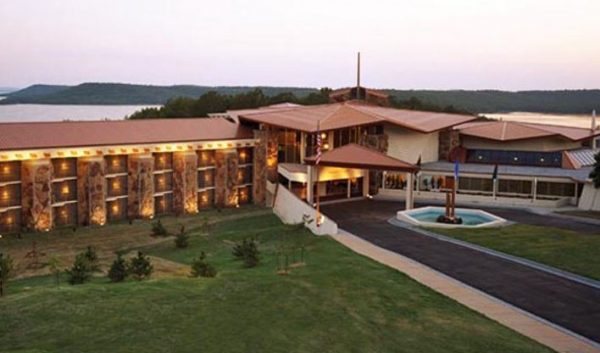7065 Hollywood Blvd Suite 100
Los Angeles, CA 90028
(323) 962-2404
Founded: 1966



Narconon likes to say that in 1966 a former Arizona prison inmate named Bill Benitez read a book by L. Ron Hubbard and came up with the idea for Narconon (a name that combines “narcotics” and “no” or “none”). And while that’s true, all that really matters is that Hubbard, seeing an opportunity, took over Narconon and made it a part of his plans for his spy wing, the Guardian’s Office, to operate numerous front groups that would spread Scientology under the cover of “social coordination.” When Narconon was originally incorporated in 1970, one of its three officers was one of Scientology’s top Guardian’s Office spies, Henning Heldt, who later went to prison for his role in Scientology’s massive 1970s infiltration of the federal government in the “Snow White Program.”
Guardian’s Office documents, gathered during a 1977 FBI raid, make it quite clear that Hubbard saw Narconon as a stealthy way to introduce his ideas to very vulnerable people — drug addicts — and Narconon would be a “bridge to the bridge,” bringing new people into Scientology and its “Bridge to Total Freedom.” But Narconon was also valuable because it allowed Scientology to say that it was helping to better society by cleaning up addicts. In more recent years, all of Scientology’s most famous celebrities have endorsed Narconon, and you would regularly hear someone like John Travolta or Tom Cruise say that Scientology was “the authority on getting people off drugs.” To cement that notion, Scientology opened its biggest facility ever — its “flagship” rehab center — in Oklahoma, far from any of Scientology’s usual haunts in California and Florida. Meanwhile, at its annual events, Scientology boasted to its members that Narconon was growing rapidly around the globe as a hugely successful church initiative.
But to prospective patients, Narconon didn’t advertise its connection to Scientology. In fact, Scientology wasn’t mentioned at all in the contract that new “students” signed, and Narconon was careful to say that it was a “secular” program, and not a faith-based one.
And that’s where the trouble started. What was once a reliable money-making worldwide network of drug rehab centers ran into serious problems in the last half dozen years. There was the 2008 death of a patient in Georgia that resulted in a troublesome lawsuit and later a law enforcement raid of the facility, which was eventually closed. Then, in 2011 and 2012, an even bigger nightmare — three deaths in nine months at the flagship itself, Narconon Arrowhead in Oklahoma. Like in Georgia, law enforcement investigations eventually petered out, but a new crop of lawsuits and the bad press that came with them resulted in a major loss of business at the big facility.
And then, there was Ryan Hamilton. Other lawyers have sued the Narconon network, but Hamilton, a Las Vegas attorney, made it a cottage industry. He realized that Narconon was vulnerable not only because so many former patients claimed to have been harmed, but because Narconon’s business model, and its contracts, were steeped in deception.
Maybe that’s not too surprising for a business that was originally formed as part of a spy operation, but Narconon’s essential scheme was stunningly brazen, once Hamilton laid it bare: Narconon claimed to be a secular organization, keeping quiet about its connection to Scientology, and it promised, for about $30,000, to deliver individualized drug counseling in a safe environment staffed with medical personnel.
The reality could not have been more different. The Narconon program delivers no drug counseling at all, but is in fact just a repackaging, in nine booklets, of the exact same procedures that a beginning Scientologist goes through in a Scientology church. And while “students” at a Narconon are engaging in staring contests and yelling at ashtrays and baking for dangerously long periods in a sauna like good Scientologists, they are in a facility with zero medical personnel, staffed instead by program graduates. Recent lawsuits claim that the environment is rife with drug use and offers of drugs for sex. In other words, a Narconon is maybe the worst place for a family to send a young addict if they truly want a “secular” rehab center and extensive counseling.
As Hamilton honed the language in his lawsuits, attorneys in other parts of the country picked up their own cases as it became obvious that there was blood in the water. Narconons everywhere used the same contracts, and made the same promises, and produced plenty of unhappy former customers who could never get their money back. And there was no sign that Scientology was making any moves to change those contracts or reform the existing Narconon network, even as its flagship center in Oklahoma declined until it was running on fumes. And worse: That claim of being secular now came back to haunt Narconon, as it couldn’t run to court and claim special protection under the religious rights guaranteed in the First Amendment, as Scientology does every time it finds itself being sued.
Narconon appeared to be in serious trouble. Increasingly, we were getting reports that the companies that insured Narconon centers were freaking out, wanting to settle lawsuits that Scientology, characteristically, wanted to fight with its usual scorched-earth tactics. As Hamilton’s lawsuits began overcoming Scientology’s motions to dismiss with almost no defeats, things began to look dire. Narconon’s insurers were going to be cutting some large checks, and with no end in sight. But then, in January last year, Miscavige responded to the crisis by announcing that he was going to be opening up a whole new set of Narconons around the world.
LINKS:
April 26, 2018: Kim Poff, finally free to speak: ‘I want this story out. I want people to know what Narconon did.’
October 30, 2018: Scientology hails study vindicating its rehab program — so we take a closer look
September 3, 2018: Scientology rehabs are hiring — if you don’t care about money or a decent place to live
March 5, 2017: Scientology’s Narconon rehabs haven’t changed in the least, even after dozens of lawsuits
July 9, 2017: Scientology trying to salvage its derelict Narconon flagship as new training center
March 4, 2016: Scientology officials panicked about overdose death of star Narconon pupil: Boyfriend
November 10, 2015: Narconon is dead, long live Narconon! How Scientology solved its drug rehab addiction
——————–

E-mail tips and story ideas to tonyo94 AT gmail DOT com or follow us on Twitter. We post behind-the-scenes updates at our Facebook author page. After every new story we send out an alert to our e-mail list and our FB page. Background on this website and its proprietor can be found at our About page.
Our book, The Unbreakable Miss Lovely: How the Church of Scientology tried to destroy Paulette Cooper, is on sale at Amazon in paperback, Kindle, and audiobook versions. Our collaboration with Paulette Cooper, Battlefield Scientology: Exposing L. Ron Hubbard’s dangerous ‘religion’, is also available at Amazon in paperback and Kindle versions.
The Best of the Underground Bunker, 1995-2017 Just starting out here? We’ve picked out the most important stories we’ve covered here at the Underground Bunker (2012-2017), The Village Voice (2008-2012), New Times Los Angeles (1999-2002) and the Phoenix New Times (1995-1999)
Learn about Scientology with our numerous series with experts…
BLOGGING DIANETICS: We read Scientology’s founding text cover to cover with the help of L.A. attorney and former church member Vance Woodward
UP THE BRIDGE: Claire Headley and Bruce Hines train us as Scientologists
GETTING OUR ETHICS IN: Jefferson Hawkins explains Scientology’s system of justice
SCIENTOLOGY MYTHBUSTING: Historian Jon Atack discusses key Scientology concepts
Other links: Shelly Miscavige, ten years gone | The Lisa McPherson story told in real time | The Cathriona White stories | The Leah Remini ‘Knowledge Reports’ | Hear audio of a Scientology excommunication | Scientology’s little day care of horrors | Whatever happened to Steve Fishman? | Felony charges for Scientology’s drug rehab scam | Why Scientology digs bomb-proof vaults in the desert | PZ Myers reads L. Ron Hubbard’s “A History of Man” | Scientology’s Master Spies | The mystery of the richest Scientologist and his wayward sons | Scientology’s shocking mistreatment of the mentally ill | The Underground Bunker’s Official Theme Song | The Underground Bunker FAQ








